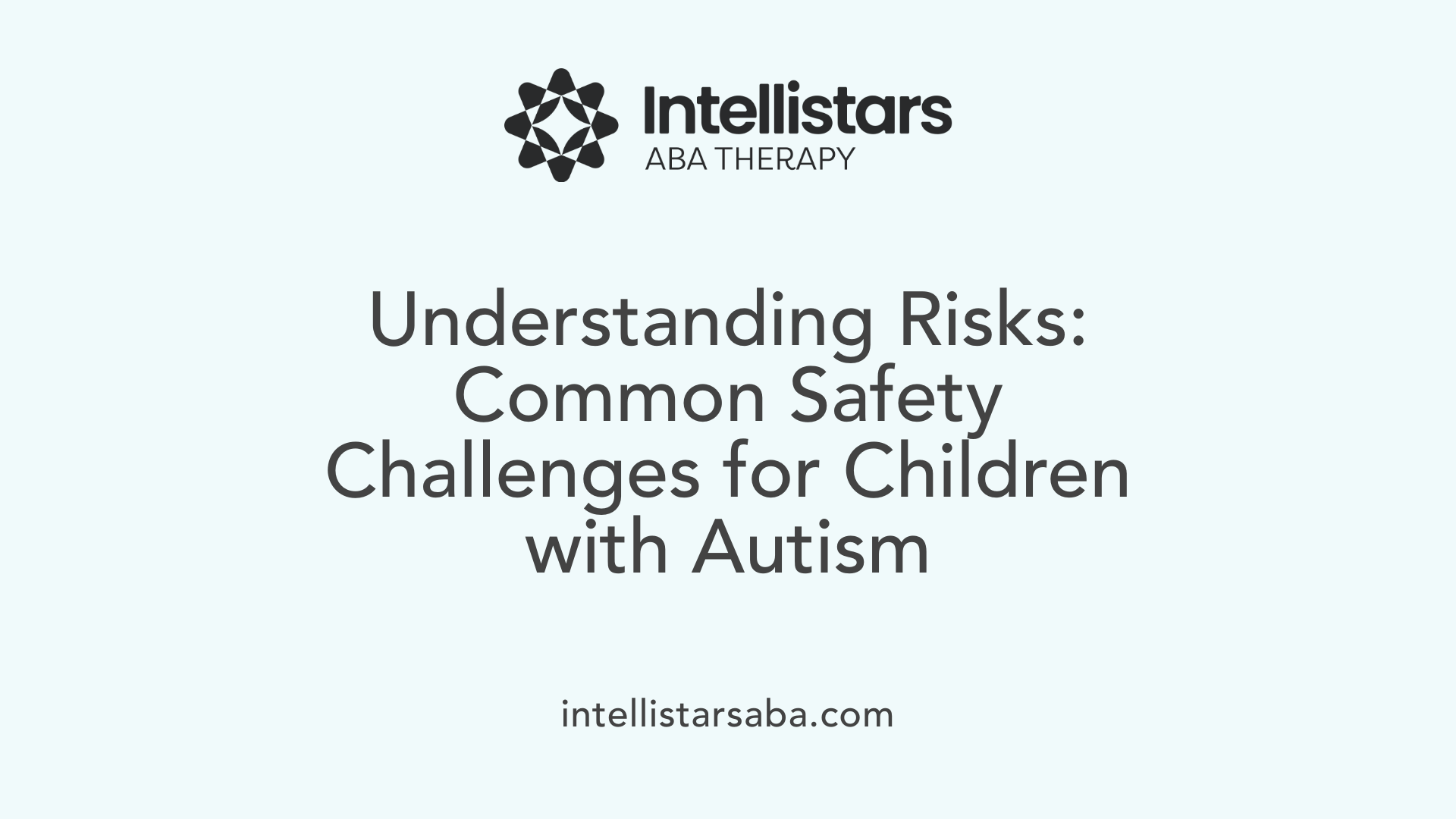Why Safety Skills Are Critical for Children with Autism
Children with autism spectrum disorder face unique safety challenges, including a high risk of wandering, difficulty recognizing danger, and challenges responding appropriately in emergencies. Applied Behavior Analysis (ABA) therapy offers effective strategies to teach vital safety skills tailored to these children's individual needs, thereby promoting independence and protecting them from harm. This article explores how ABA is used to develop, implement, and sustain comprehensive safety training for children with autism.
Understanding ABA Therapy and Its Application in Safety Skills

What is Applied Behavior Analysis (ABA) therapy?
Applied Behavior Analysis (ABA) therapy is a scientifically supported approach that focuses on improving learning and behavior for individuals with autism spectrum disorder (ASD). It uses evidence-based methods to encourage helpful behaviors—like communication and social skills—while decreasing harmful or unsafe behaviors. Techniques central to ABA include positive reinforcement, task analysis, and functional behavior assessments. Treatment plans are tailored individually and may include structured methods such as Discrete Trial Training or more naturalistic strategies like Pivotal Response Treatment. Therapy can be delivered across various settings including homes, schools, and clinics, often involving caregiver training to support consistent learning.
How does ABA therapy benefit individuals with autism?
ABA therapy helps individuals with autism by developing essential social, communication, and daily living skills. It uses personalized, data-driven interventions to increase safe and functional behaviors while minimizing risky or unsafe actions. Early and intensive ABA therapy has been shown to significantly improve language abilities, independence, and participation in everyday situations. This approach also equips individuals with skills to better understand and avoid dangers such as wandering or responding incorrectly to strangers, thereby improving overall safety and quality of life.
Who typically provides ABA therapy and what are their qualifications?
ABA therapy is provided by trained professionals including Board Certified Behavior Analysts (BCBAs), Assistant Behavior Analysts (BCaBAs), and Registered Behavior Technicians (RBTs). BCBAs design and supervise individualized treatment plans and carry out assessments. To qualify as a BCBA, individuals must earn a master's degree in applied behavior analysis or related fields, complete supervised practical hours, and pass a certification exam. Therapists and educators work under BCBAs’ supervision to deliver therapy directly. Families and caregivers actively participate to reinforce strategies outside formal sessions.
How is ABA therapy tailored to individual needs?
Tailoring ABA therapy involves thorough assessments that identify each child’s strengths, challenges, and learning needs. Treatment goals focus on safety-related areas such as recognizing stranger danger, following fire safety procedures, or safely crossing streets. Visual supports, communication tools, and environmental adaptations are customized to the child’s developmental stage and language comprehension. Ongoing monitoring through data collection allows therapists to adjust interventions to improve effectiveness and generalization of skills across settings.
What common ABA techniques support safety training?
ABA employs several techniques to teach and maintain safety skills. Positive reinforcement motivates safe behaviors using immediate rewards and structured reinforcement schedules. Task analysis breaks down complex safety tasks—like crossing a street—into manageable steps taught gradually. Visual supports such as picture schedules and social stories clarify safety rules and reduce anxiety. Role-playing and in situ training provide real-world practice to strengthen learning. Collaboration among therapists, families, and educators ensures consistent application of safety techniques across environments.
Together, these components make ABA an effective and adaptable framework to teach crucial safety skills to children with autism, helping reduce risks associated with wandering, fire hazards, and stranger interactions.
Safety Challenges Faced by Children with Autism

Common safety risks for children with autism
Children with autism face unique safety challenges such as wandering, elopement, inability to seek help when lost, and difficulty responding appropriately to strangers. These behaviors increase their risk of injury or harm in everyday environments. For example, they might not understand the danger of crossing streets alone or interacting with unknown people.
Statistics on elopement and wandering
Research shows that over 80% of children with autism spectrum disorder have experienced elopement at least once. This high prevalence highlights wandering as a significant safety concern and underscores the urgent need for effective prevention strategies.
Importance of early safety education
Early and functional safety training is crucial. By teaching safety skills and awareness from a young age, caregivers can help reduce risks. ABA therapy often includes safety training, using structured methods such as role-playing, visual supports, and positive reinforcement to build and maintain these important behaviors.
Limitations in understanding abstract safety concepts
Children with autism may struggle to grasp abstract ideas like danger or emergency situations due to limited language comprehension and developmental differences. This limitation makes direct supervision and tailored teaching methods critical to their safety. Visual aids and concrete examples are necessary to communicate safety rules effectively.
By addressing these challenges head-on, caregivers and professionals can develop individualized plans that empower children with autism to navigate their surroundings more safely.
Implementing Safety Skill Training through ABA

Functional behavior assessments to identify unsafe behaviors
Functional behavior assessments (FBAs) play a crucial role in safety skill training by identifying the reasons behind unsafe behaviors like wandering or elopement. Understanding the function of these behaviors allows therapists to develop personalized, effective intervention plans that target the motivation behind unsafe actions.
Task analysis to teach safety steps
Task analysis breaks down complex safety skills into small, manageable steps. For example, crossing the street can be divided into stopping, looking both ways, listening, and walking safely across. Teaching these components one at a time helps children with autism master each step, ensuring safety skills are thoroughly learned and easier to generalize.
Role of positive reinforcement in safety learning
Positive reinforcement is central in ABA safety training. Immediate rewards and consistent reinforcement schedules motivate children to adopt and maintain safe behaviors. By celebrating successes, therapists and caregivers encourage ongoing practice that solidifies safety skills in daily life.
Use of visual supports, social stories, and role-playing
Visual supports such as picture schedules and social stories simplify abstract safety concepts, reducing anxiety and promoting independence. Role-playing sessions and in situ training allow children to practice safety behaviors in controlled yet realistic contexts, enhancing understanding and retention.
Strategies for stranger danger, fire safety, and street crossing education
Teaching stranger danger involves using consistent explanations and visual cues to differentiate safe strangers—like police officers or firefighters—from unknown individuals. Fire safety lessons incorporate role-playing fire drills alongside visual schedules with picture cards outlining procedures. Street crossing education emphasizes skills like holding hands, attentive looking, and safe walking, supported by repetition and positive feedback to build confidence and competence.
Collaboration and Support Systems in Safety Skill Development

Parent and Caregiver Involvement in Safety Training
Parents and caregivers play a crucial role in the safety training of children with autism. By engaging in ABA safety training, they gain tools to teach important safety behaviors, such as recognizing stranger danger, fire safety, and preventing wandering. Their ongoing participation helps ensure that safety skills are reinforced consistently across home and community environments.
Training Caregivers and Therapists
ABA therapy emphasizes equipping caregivers and therapists with strategies like task analysis, positive reinforcement, and visual supports. These techniques simplify complex safety steps and make learning manageable for children. Training also covers how to use role-playing and in situ practice to help children generalize safety behaviors in real-world settings.
Collaborative Communication Among Families, Therapists, and Educators
Open, regular communication between families, therapists, and educators is essential. Sharing observations, challenges, and progress promotes consistency and allows for tailored interventions that meet the child’s evolving needs. Collaborative planning maximizes the effectiveness of safety skill development.
Ongoing Assessment and Data-Driven Adjustments
Safety skill development requires continuous assessment through data collection. Tracking progress allows the team to identify which strategies work best and adapt plans as necessary. This ensures safety behaviors are maintained and generalized beyond training sessions.
Use of Technology Like GPS Tracking and Environmental Modifications
Modern technology supports safety by offering tools such as GPS tracking devices (e.g., smartphone apps) and environmental modifications like securely locking gates and door alarms. Parents and caregivers can select these measures based on the child's individual needs to further reduce risks associated with wandering and other safety concerns.
Families support their loved ones undergoing ABA therapy by actively engaging in training, communicating frequently with professionals, and integrating safety strategies into daily life. This collaboration strengthens safety outcomes and promotes the child’s independence and well-being.
Practical Safety Measures and Continuous Progress Monitoring
Environmental Safety Measures Like Locks and Alarms
Ensuring a secure environment is fundamental to protecting children with autism. Practical steps include securely locking gates and doors to prevent wandering. Installing bells or chimes on doors can alert caregivers to any unexpected exits, promoting prompt response.
Use of GPS Devices and Identification Bracelets
Technology plays a valuable role in child safety. GPS tracking devices, such as smartphone apps like Find My iPhone, provide real-time location monitoring. Additionally, identification bracelets with essential contact information offer an extra layer of security if a child becomes lost.
Safety Training for High-Risk Situations Like Water and Parking Lots
Specialized safety strategies are essential in environments with high risks, such as pools and parking areas. Swimming lessons paired with vigilant supervision reduce drowning risks, while coordinated supervision in parking lots prevents accidents. Addressing these areas tailors protection to specific hazards.
The Importance of Supervision and Individualized Strategies
Given that children with autism may struggle to grasp abstract safety concepts, constant supervision remains critical. Families and caregivers should consider each child's unique developmental level and needs when selecting safety tools and interventions, ensuring personalized safeguards that are effective and respectful.
Continuous Feedback, Persistence, and Adaptive Techniques
Safety instruction is an ongoing process. ABA therapy emphasizes patient, persistent teaching with continuous data collection and feedback. Regular assessment allows for adaptive strategies, ensuring safety skills are retained and generalized across settings, ultimately enhancing protective behaviors over time.
Building a Safer Future through ABA Therapy
Teaching safety skills to children with autism is a vital aspect of promoting their independence and well-being. ABA therapy provides a structured, research-based framework to address unique safety challenges faced by these children, employing tailored interventions that incorporate positive reinforcement, role-play, visual supports, and caregiver collaboration. With continuous assessment and adaptive approaches, ABA supports children in learning, generalizing, and maintaining life-saving safety skills. When families, professionals, and communities unite in these efforts, we can create safer environments where children with autism can thrive with confidence and security.
References
- Webinar: Teaching Safety Skills to Individuals with Autism
- Key Safety Training in ABA Therapy Sessions
- Teaching Safety Skills for Autism | Keeping Kids with ...
- Teaching Safety to a Child with Autism
- Personalized ABA Therapy Plans: Data-Driven Success
- Customized In-Home ABA Therapy – What Families Should ...
- Why Customized ABA Therapy Plans Matter
- Is ABA Therapy Customized for Each Individual's Needs?
- How to Become an ABA Therapist - School of Education






